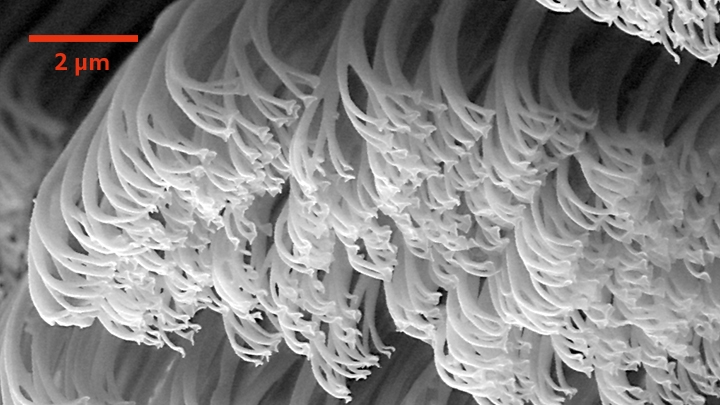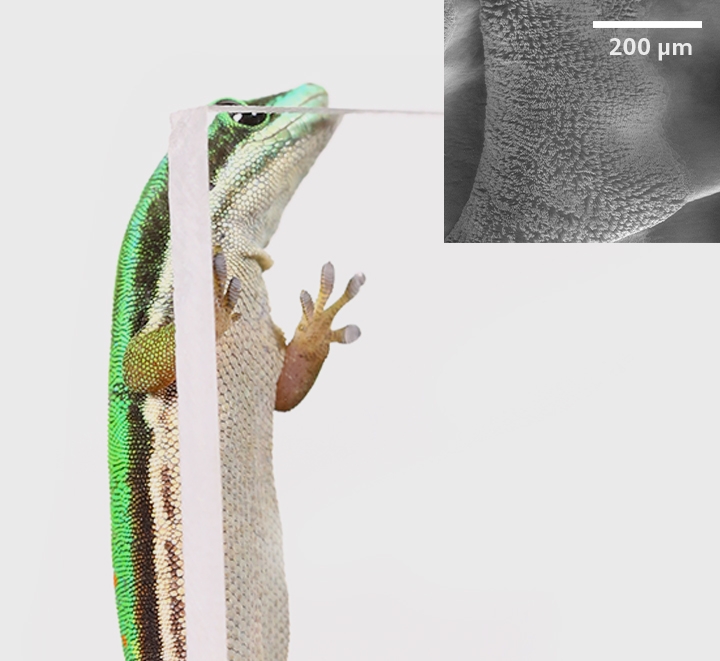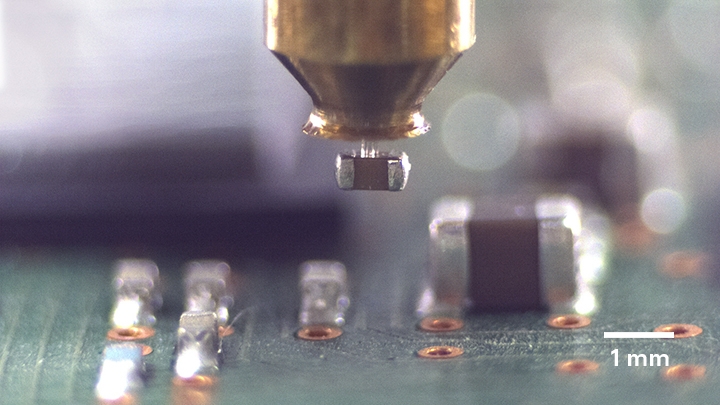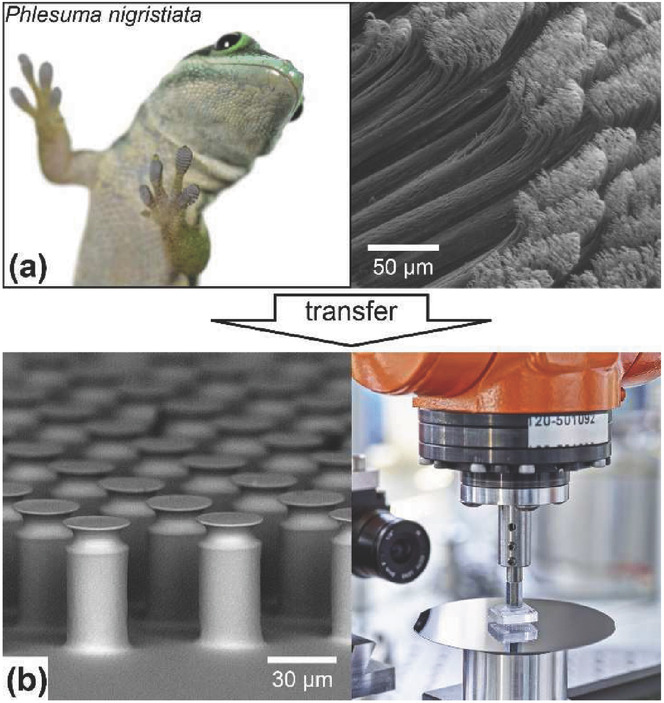Gecko effect
From nature to industry
Adhesive gripping systems inspired by nature
Turning evolution into revolutionary technical designs
The Gecomer® Technology is the result of award-winning fundamental research on the strongest adhesion in nature. The pioneering research by Prof. Eduard Arzt and his groups, at the Max Planck Institute for Metal Research and at the Leibniz-Institute for New Materials, has successfully demonstrated the transfer to laboratory scale.

Using clean room technology and computer simulations, we have developed our own, patented surface structures that adhere reversibly to various materials and objects. The adhesion and release performance is tailored to the requirements in an industrial environment through material, topography and miniaturization.
Bioinspired, synthetic adhesive structures are the base of the Gecomer® Technology. They are manufactured from specialized polymers and optimized using numerical simulations.

Gecko Effect

Finely structured, hairy (“fibrillar”) adhesive organs enable geckos to adhere temporarily and controllably to a wide variety of surfaces.
But how can a holding force be generated without external mechanisms such as electric or magnetic fields, negative pressure, or residual adhesives?
The basic principle of microscopic dry adhesion systems is based on the observation that microstructured surfaces typically exhibit higher adhesion than unstructured, flat adhesives. This is referred to as the principle of contact splitting. For a given surface area, the greater the adhesion effect, the greater the number of smaller dot areas into which this total area is divided. At this micro- and nanoscale, surface effects known as van der Waals interactions dominate. These weak, intermolecular interactions occur temporarily on an atomic scale between two polarizable molecules without changing the material properties of the respective partners.
Pick and Place
Picking Process
To pick the component, the pillars of the adhesive structure are gently pressed onto the component surface. The contact between the two surfaces causes the van der Waals forces to act and the component can be handled safely.
Picking with gentle pressure
Releasing Process
To lay down the component, the contact area is reduced, for example by briefly buckling the pillars. The van der Waals forces lose their effect and the component is released.
Several release mechanisms can be used:
Releasing the component by buckling – patent pending
Releasing the component by sliding
Releasing the component by rotating
Publications
Publikation von INNOCISE
Highly sensitive adhesion
A synthetic, reversible adhesion system based on a gecko foot delivers impressive results, in particular for MICROHANDLING. Inspired by nature, the physical principle utilised leaves sensitive surfaces intact,
conserves resources and can be used with no size restrictions.
Our industrial society is shifting from standardised products towards increasingly individual products tailored to customer needs. The increasing levels of automation and miniaturisation that contribute to companies’ profitability these days are in contrast to the growing demands for product flexibility and individuality. Appropriate handling approaches play a central role in these development.

Publication of the INM – Leibniz Institute for New Materials
Engineering Micropatterned Dry Adhesives: From Contact Theory to Handling Applications
Reversible adhesion is the key functionality to grip, place, and release objects nondestructively. Inspired by nature, micropatterned dry adhesives are promising candidates for this purpose and have attracted the attention of research groups worldwide. Their enhanced adhesion compared to nonpatterned surfaces is frequently demonstrated. An important conclusion is that the contact mechanics involved is at least as important as the surface energy and chemistry. In this paper, the roles of the contact geometry and mechanical properties are reviewed. With a focus on applications, the effects of substrate roughness and of temperature variations, and the long‐term performance of micropatterned adhesives are discussed. The paper provides a link between the current, detailed understanding of micropatterned adhesives and emerging applications.

